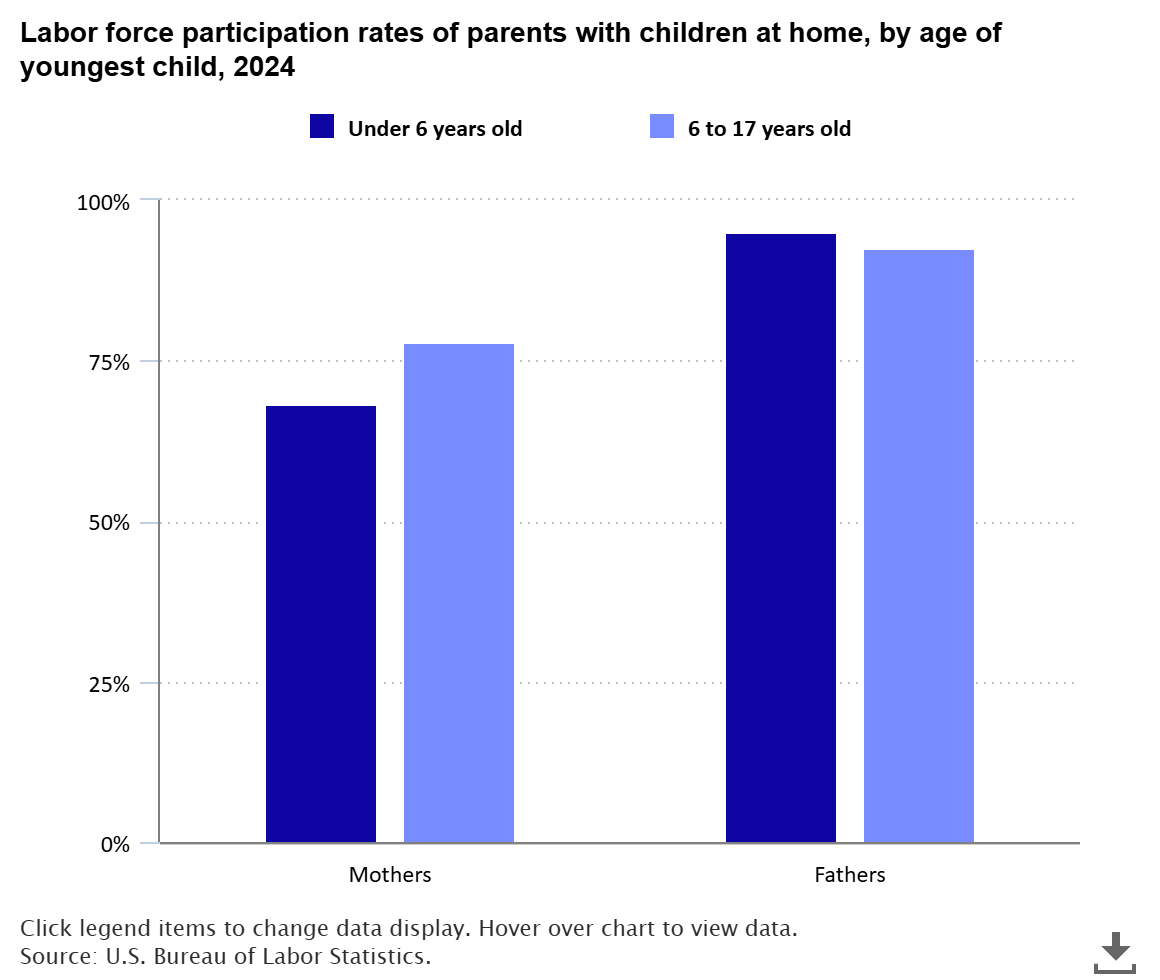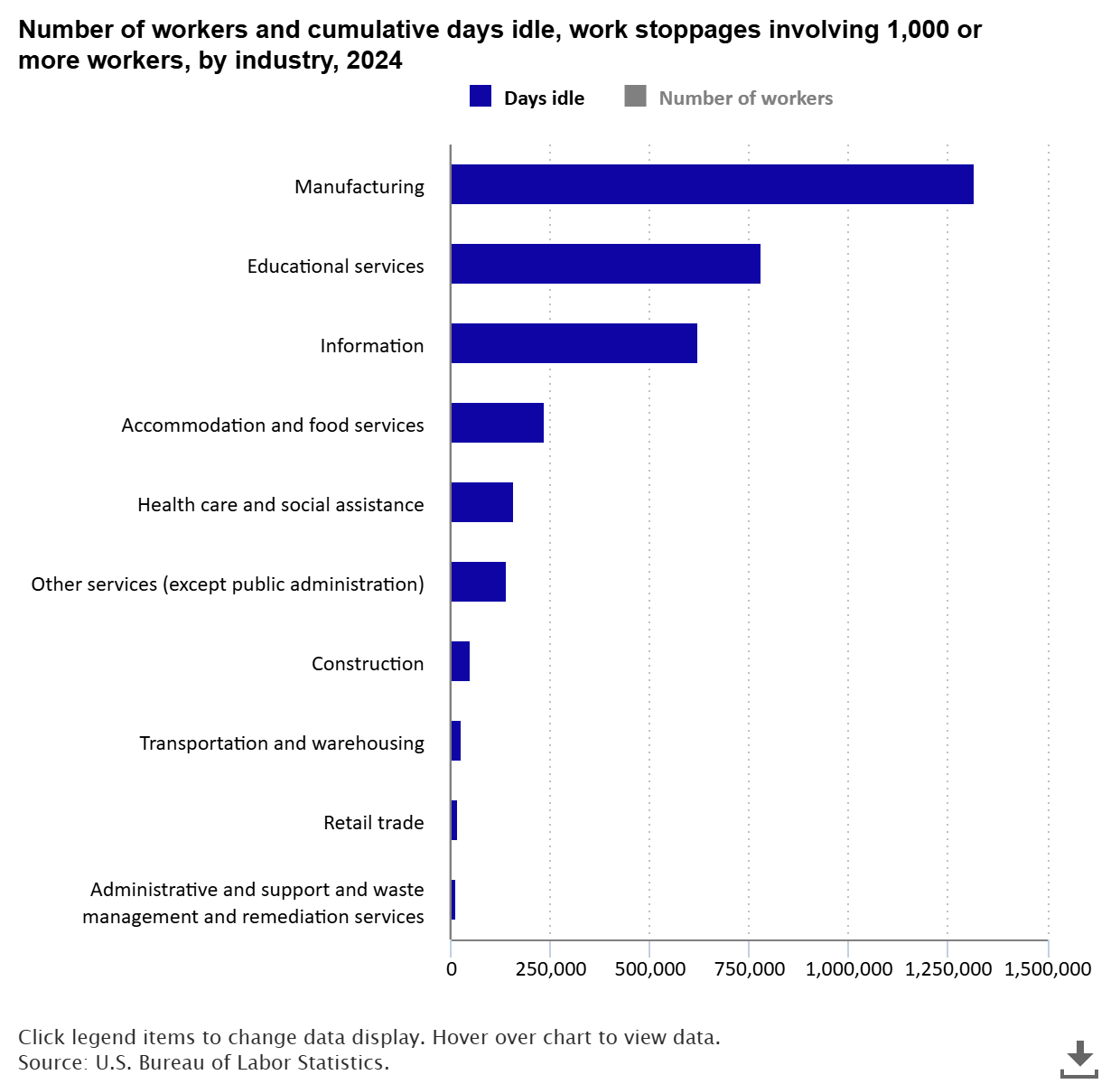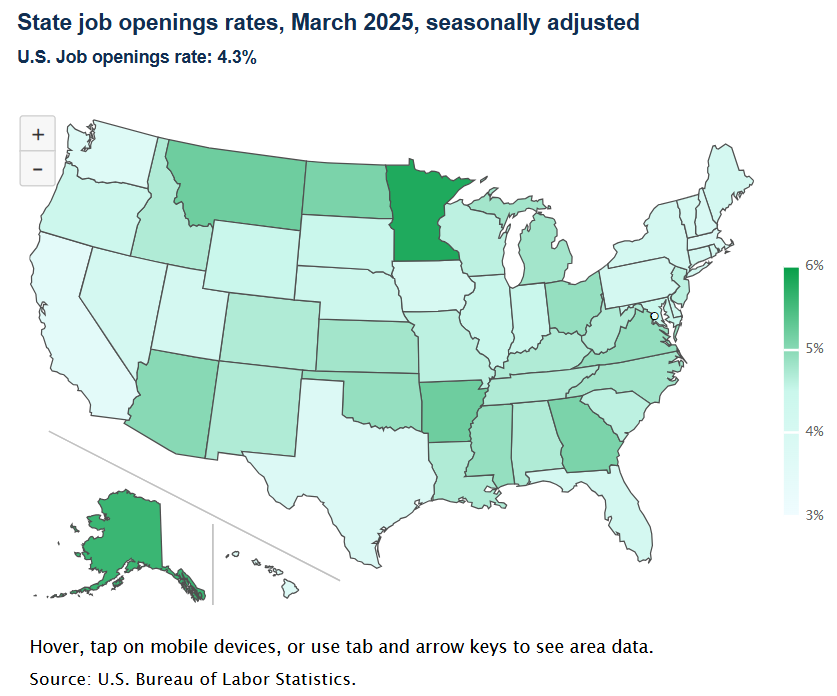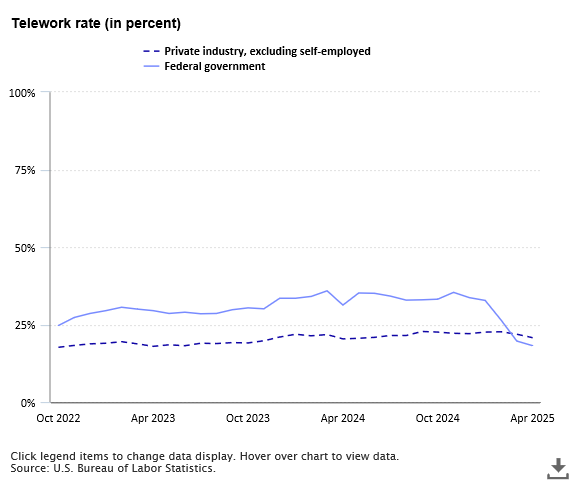An official website of the United States government
 United States Department of Labor
United States Department of Labor

In 2024, about one in five people age 65 and older participated in the labor force by working or looking for work. However, older Americans who continue to work often shift toward part-time rather than full-time employment. Among employed people age 65 and older, 38.3 percent worked part time in 2024.
read full article »
Among mothers whose youngest child at home was 6 to 17 years old, 78.0 percent participated in the labor force by working or looking for work in 2024. This was higher than the labor force participation rate among mothers with children under age 6, at 68.3 percent.

A total of 31 major work stoppages, involving 271,500 workers and a cumulative total of 3,364,100 days of idleness, began during 2024. Work stoppages in manufacturing involved 38,000 workers for a cumulative total of 1,316,000 days idle during 2024. In education services, 110,400 workers were involved in major work stoppages for a total of 782,200 days idle. Work stoppages in information that began in 2024 involved 19,600 workers for a total of 620,800 days of idleness.

Job openings rates decreased in 3 states and were little changed in 47 states and the District of Columbia in March 2025. The decreases in job openings rates occurred in Massachusetts (-1.5 percentage points), New Mexico (-1.2 points), and New York (-0.5 point). Over the month, the national job openings rate changed little, at 4.3 percent. There were 34 states that had job openings rates at or above the national rate.

Less than one in five (18.2 percent) federal government workers spent some time teleworking or working at home for pay in April 2025, down from 31.3 percent a year earlier. Among federal government workers, 8.5 percent teleworked for some of their work hours, while 9.7 percent teleworked for all of their hours. Both of these numbers were down over the year.

